Related Research Articles

Imperial Airways was an early British commercial long-range airline, operating from 1924 to 1939 and principally serving the British Empire routes to South Africa, India, Australia and the Far East, including Malaya and Hong Kong. Passengers were typically businessmen or colonial administrators, and most flights carried about 20 passengers or fewer. Accidents were frequent: in the first six years, 32 people died in seven incidents. Imperial Airways never achieved the levels of technological innovation of its competitors and was merged into the British Overseas Airways Corporation (BOAC) in 1939. BOAC in turn merged with the British European Airways (BEA) in 1974 to form British Airways.

The Bristol Aeroplane Company, originally the British and Colonial Aeroplane Company, was both one of the first and one of the most important British aviation companies, designing and manufacturing both airframes and aircraft engines. Notable aircraft produced by the company include the 'Boxkite', the Bristol Fighter, the Bulldog, the Blenheim, the Beaufighter, and the Britannia, and much of the preliminary work which led to Concorde was carried out by the company. In 1956 its major operations were split into Bristol Aircraft and Bristol Aero Engines. In 1959, Bristol Aircraft merged with several major British aircraft companies to form the British Aircraft Corporation (BAC) and Bristol Aero Engines merged with Armstrong Siddeley to form Bristol Siddeley.

Handley Page Limited was a British aerospace manufacturer. Founded by Frederick Handley Page in 1909, it was the United Kingdom's first publicly traded aircraft manufacturing company. It went into voluntary liquidation and ceased to exist in 1970. The company, based at Radlett Aerodrome in Hertfordshire, was noted for its pioneering role in aviation history and for producing heavy bombers and large airliners.
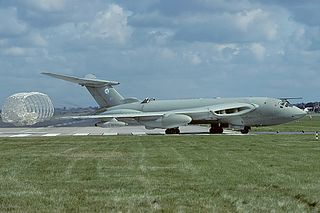
The Handley Page Victor is a British jet-powered strategic bomber developed and produced by Handley Page during the Cold War. It was the third and final V bomber to be operated by the Royal Air Force (RAF), the other two being the Vickers Valiant and the Avro Vulcan. Entering service in 1958, the Victor was initially developed as part of the United Kingdom's airborne nuclear deterrent, but it was retired from the nuclear mission in 1968, following the discovery of fatigue cracks which had been exacerbated by the RAF's adoption of a low-altitude flight profile to avoid interception, and due to the pending introduction of the Royal Navy's submarine-launched Polaris missiles in 1969.
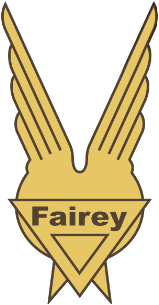
The Fairey Aviation Company Limited was a British aircraft manufacturer of the first half of the 20th century based in Hayes in Middlesex and Heaton Chapel and RAF Ringway in Cheshire that designed important military aircraft, including the Fairey III family, the Swordfish, Firefly, and Gannet. It had a strong presence in the supply of naval aircraft, and also built bombers for the RAF.

Miles was the name used between 1943 and 1947 to market the aircraft of British engineer Frederick George Miles, who, with his wife – aviator and draughtswoman Maxine "Blossom" Miles – and his brother George Herbert Miles, designed numerous light civil and military aircraft and a range of curious prototypes.

The Handley Page HP.52 Hampden is a British twin-engine medium bomber that was operated by the Royal Air Force (RAF). It was part of the trio of large twin-engine bombers procured for the RAF, joining the Armstrong Whitworth Whitley and Vickers Wellington. The Hampden was powered by Bristol Pegasus radial engines but a variant known as the Handley Page Hereford had in-line Napier Daggers.

A hangar is a building or structure designed to hold aircraft or spacecraft. Hangars are built of metal, wood, or concrete. The word hangar comes from Middle French hanghart, of Germanic origin, from Frankish *haimgard, from *haim and gard ("yard"). The term, gard, comes from the Old Norse garðr.
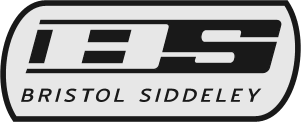
Bristol Siddeley Engines Ltd (BSEL) was a British aero engine manufacturer. The company was formed in 1959 by a merger of Bristol Aero-Engines Limited and Armstrong Siddeley Motors Limited. In 1961 the company was expanded by the purchase of the de Havilland Engine Company and the engine division of Blackburn Aircraft. Bristol Siddeley was purchased by Rolls-Royce Limited in 1966.

The Handley Page Heyford was a twin-engine biplane bomber designed and produced by the British aircraft manufacturer Handley Page. It holds the distinction of being the last biplane heavy bomber to be operated by the Royal Air Force (RAF).
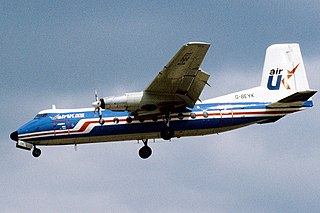
The Handley Page HPR.7 Dart Herald is a British turboprop passenger aircraft, designed in the 1950s as a DC-3 replacement, but only entering service in the 1960s by which time it faced stiff competition from Fokker and Avro. Sales were disappointing, contributing in part to the demise of Handley Page in 1970.
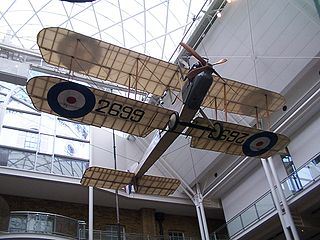
Aircraft dope is a plasticised lacquer that is applied to fabric-covered aircraft. It tightens and stiffens fabric stretched over airframes, which renders them airtight and weatherproof, increasing their durability and lifespan. The technique has been commonly applied to both full-size and flying models of aircraft.

The Handley Page (Reading) H.P.R.1 Marathon was a British four-engined civil transport aircraft, capable of seating up to 20 passengers. It was designed by Miles Aircraft Limited and largely manufactured by Handley Page (Reading) Limited at Woodley Aerodrome, Reading, England.

The aerospace industry of the United Kingdom is the second-largest national aerospace industry in the world and the largest in Europe by turnover, with a global market share of 17% in 2019. In 2020, the industry employed 116,000 people.
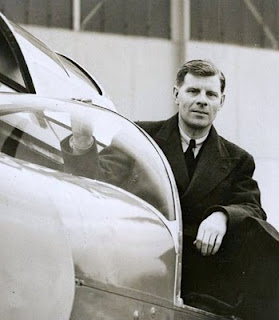
Frederick George Miles was a British aircraft designer and manufacturer who designed numerous light civil and military aircraft and a range of prototypes. The name "Miles" is associated with two distinct companies that Miles was involved in and is also attached to many non-aviation products such as the Biro pen, photocopiers and book binding machinery. Throughout his life, he was known as "Miles" and never by his first name, even to his own family, although Don Brown refers to him as "F.G.", presumably to distinguish him from his brother George.
Dowty Group was a leading British manufacturer of aircraft equipment. It was listed on the London Stock Exchange and was once a constituent of the FTSE 100 Index. The firm ceased operating as an individual entity following its acquisition by TI Group in 1992.
British Aviation Services Limited (Britavia) was an early post-World War II airline holding company and air transport operator that could trace its roots back to 1946. Its main activities included trooping, inclusive tour (IT) and worldwide passenger and freight charter services. British Aviation Services' first investment in a British independent airline occurred in 1946, when it acquired a minority interest in Silver City Airways. Silver City Airways operated the world's first cross-Channel air ferry service on 13 July 1948. It subsequently became British Aviation Services' biggest operating division. In 1953, British Aviation Services took over the independent airline Air Kruise. The same year, BAS Group also took control of Aquila Airways, the last commercial flying boat operator in the United Kingdom. The completion of these acquisitions by mid-1954 resulted in a reorganisation of the British Aviation Services group, with British Aviation Services Ltd (BAS Group) becoming the group's holding company and Britavia one of its operating subsidiaries. By the late 1950s, BAS Group became Britain's largest independent airline operator. Its numerous operating divisions included Britavia's Hermes Division at Blackbushe Airport and Aquila Airways's Flying Boat Division at Hamble near Southampton. The former concentrated on trooping services and inclusive tours while the latter provided scheduled services to Portugal, the Canary Islands and Italy. In 1962, BAS Group merged with British United Airways (BUA), which by that time had replaced BAS as the UK's largest independent airline operator.

Kansai Nerolac Paints Limited is the largest industrial paint and third largest decorative paint company of India based in Mumbai. It is a subsidiary of Kansai Paint of Japan. As of 2015, it has the third largest market share with 15.4% in the Indian paint industry. It is engaged in the industrial, automotive and powder coating business. It develops and supplies paint systems used on the finishing lines of electrical components, cycle, material handling equipment, bus bodies, containers and furniture industries.
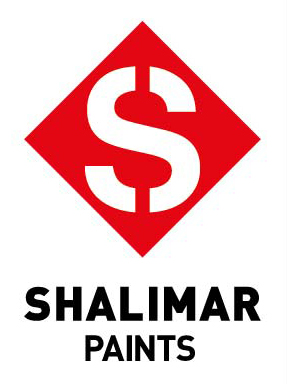
Shalimar Paints BSE: 509874 is an Indian paints manufacturing company. The company engages in the manufacturing and marketing of decorative paints and industrial coatings. Some of India's buildings and structures such as the Howrah Bridge, Rashtrapati Bhawan, Salt Lake Stadium, All India Institute of Medical Sciences, and many others, continue to be painted with Shalimar Paints.

Lancashire Aircraft Corporation was a major British charter airline after World War II. Its founding father was Eric Rylands. It played an important role in the Berlin Airlift. It also flew scheduled routes and was important in the development of Coach-air services, leading to the founding of Skyways Coach Air and the start of the Inclusive Tour (IT) industry. Its major subsidiary, Samlesbury Engineering, supported its operations and converted many military aircraft for commercial use, also founding Lancashire Aircraft Company.
References
- Notes
- ↑ Wood, Andrew. "It began in 1881." Archived 4 March 2016 at the Wayback Machine AkzoNobel, 2009. Retrieved: 15 May 2012.
- ↑ "Titanine." Flight, 14 December 1922. Retrieved: 25 April 2012.
- ↑ "Gemini." Flight, 1947. Retrieved: 25 April 2012.
- ↑ "Insolvency proceedings." Flight, 1947. Retrieved: 25 April 2012.
- ↑ "Titanine aircraft finishes are used on the Handley-Page Victor". Flight : 1. 1 January 1954.
- ↑ "In Brief". Flight : 530. 23 April 1954.
- ↑ "Titanine aircraft finishes". Flight : 84. 2 September 1960.
- ↑ "The British Emaillite Co." Flight, 19 November 1915. Retrieved: 25 April 2012.
- ↑ "Titanine Ltd." Flight, 29 May 1924. Retrieved: 25 April 2012.
- ↑ "Titanine-Emaillite." The London Gazette, 2 June 1936. Retrieved: 25 April 2012.
- ↑ "Dufay Titanine." Flight International, 8 December 1979. Retrieved: 25 April 2012.
- ↑ "Modern Industrial Finishes Ltd." Flight International, 8 December 1962. Retrieved: 25 April 2012.
- ↑ "Industry." Pigment & Resin Technology, Vol. 15, Issue 9, pp. 23–25.
- Bibliography
- Amos, Peter. Miles Aircraft – The Early Years: The Story of F.G. Miles and his Aeroplanes, 1925–1939. Tonbridge, Kent, UK: Air-Britain (Historians) Ltd, 2009. ISBN 978-0-85130-410-6.
- Brown, Don Lambert. Miles Aircraft Since 1925. London: Putnam & Company Ltd., 1970. ISBN 0-37000-127-3.
- Temple, Julian C. Wings Over Woodley – The Story of Miles Aircraft and the Adwest Group. Bourne End, Bucks, UK: Aston Publications, 1987. ISBN 0-946627-12-6.